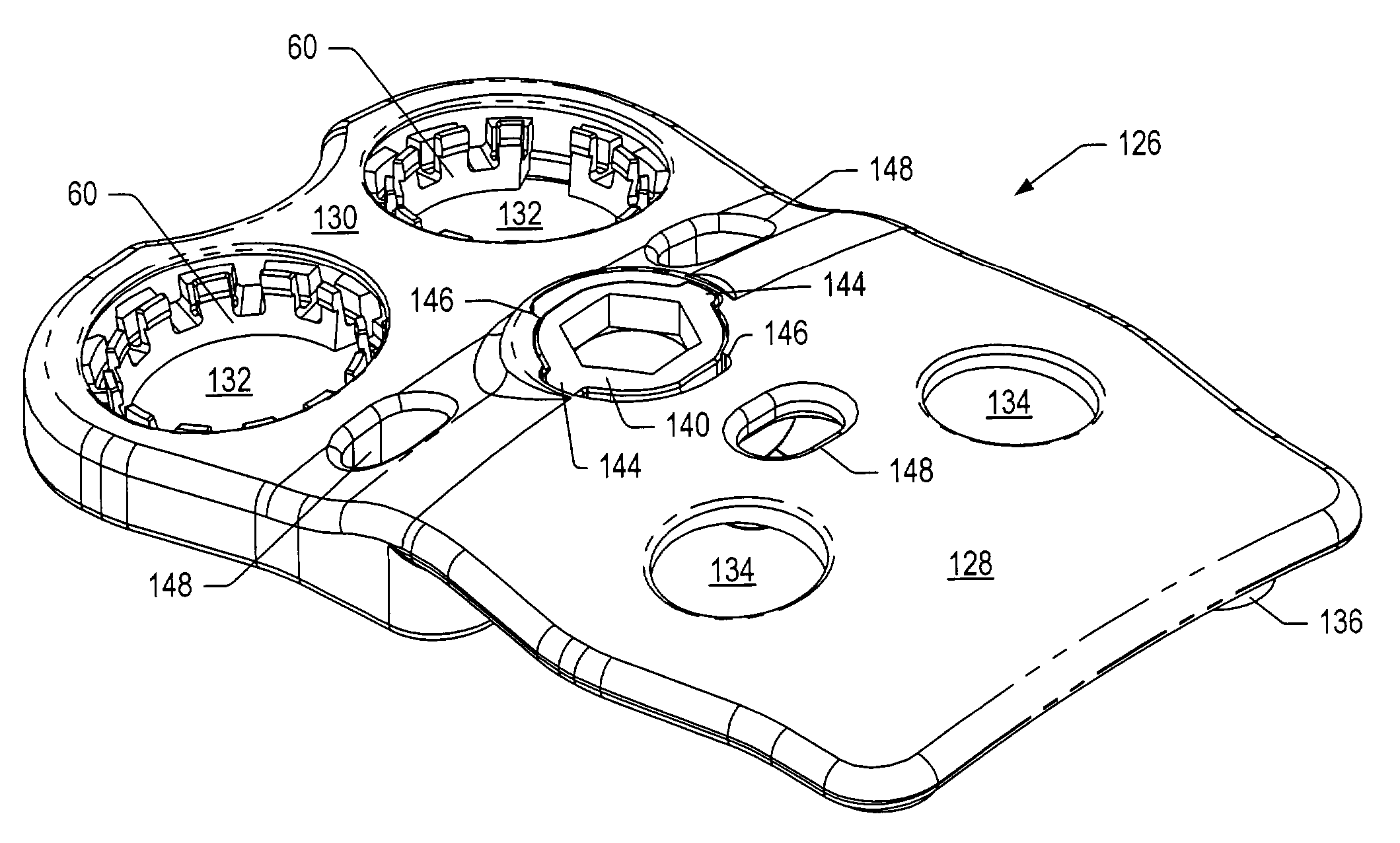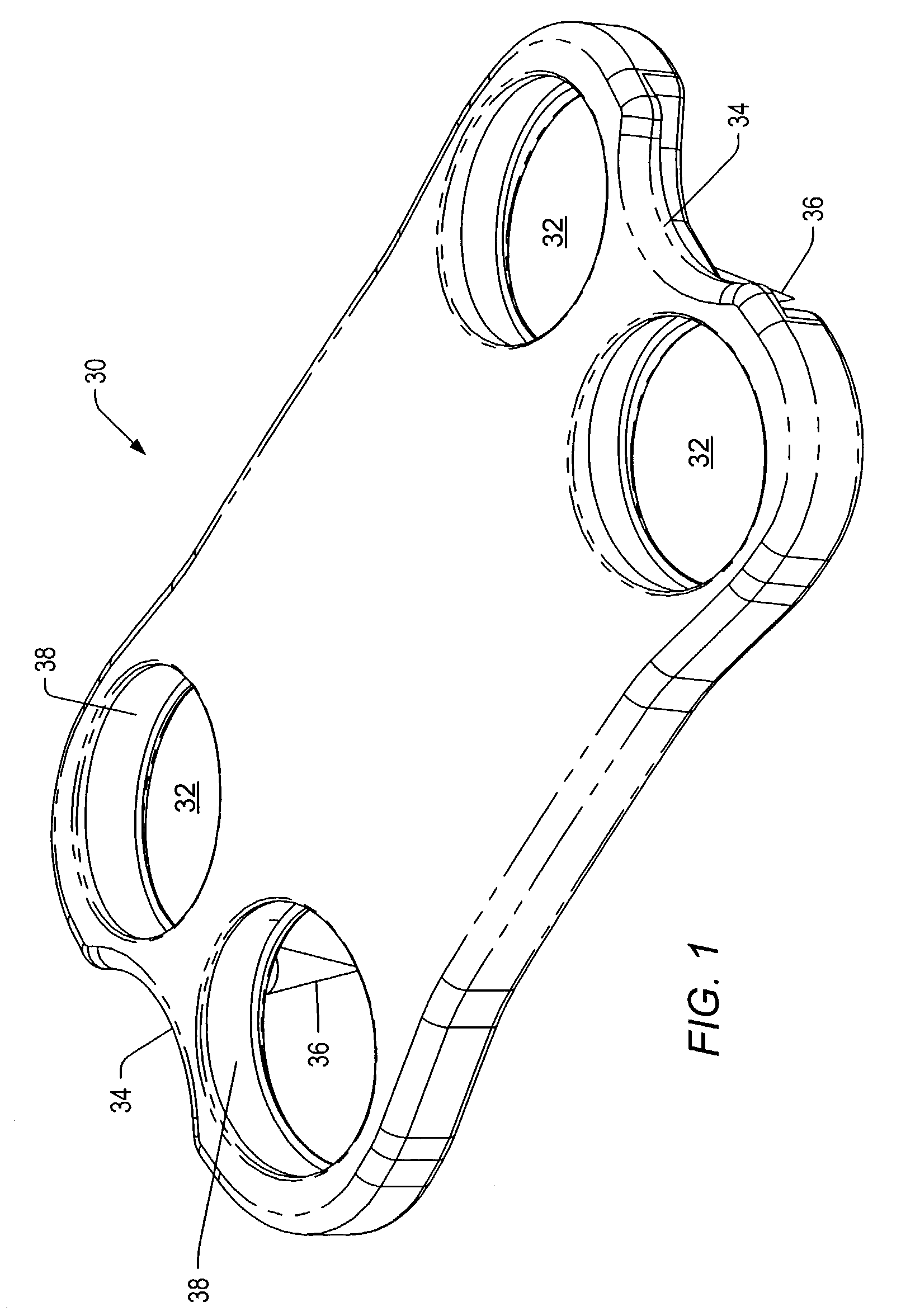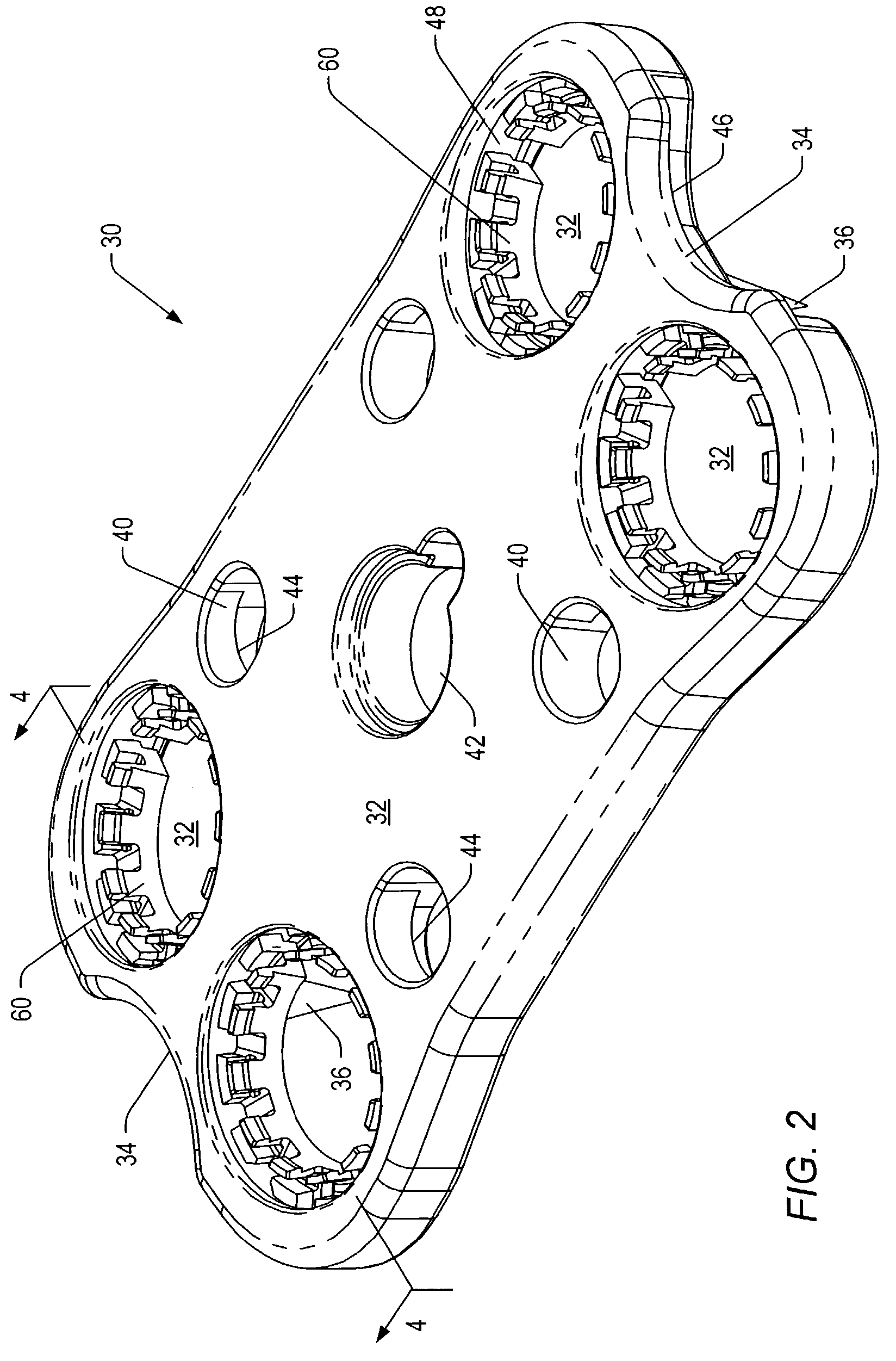Spinal plate extender system and method
a technology of extender plate and spine, which is applied in the field of bone fixation system, can solve the problems of degeneration of the intervertebral disc, destabilization of the spinal column, alteration of the natural separation distance between adjacent vertebrae, etc., and achieve the effect of increasing heigh
- Summary
- Abstract
- Description
- Claims
- Application Information
AI Technical Summary
Benefits of technology
Problems solved by technology
Method used
Image
Examples
Embodiment Construction
[0046]Bone plate systems may be used to join together bone segments and / or bones. Bone plates may be used to correct problems resulting from injury and / or disease. Bone plates may be used to join together long bones (e.g., femur, tibia, humerus, etc.). A bone plate may also be used to join together vertebra. Such a bone plate may be referred to as a spinal plate or a base plate. In some embodiments, base plates may be used to stabilize cervical vertebrae. Base plates may also be used to stabilize other types of vertebrae.
[0047]In an initial operation, a base plate may be installed in a patient. The base plate may stabilize vertebrae. A base plate may be used to stabilize one or more vertebral levels depending on the patient's needs. One vertebral level may include a first vertebra, a second vertebra adjacent to the first vertebra, and an intervertebral space between the first and second vertebrae. In some embodiments, the intervertebral space may include an intervertebral disc and / o...
PUM
 Login to View More
Login to View More Abstract
Description
Claims
Application Information
 Login to View More
Login to View More - R&D
- Intellectual Property
- Life Sciences
- Materials
- Tech Scout
- Unparalleled Data Quality
- Higher Quality Content
- 60% Fewer Hallucinations
Browse by: Latest US Patents, China's latest patents, Technical Efficacy Thesaurus, Application Domain, Technology Topic, Popular Technical Reports.
© 2025 PatSnap. All rights reserved.Legal|Privacy policy|Modern Slavery Act Transparency Statement|Sitemap|About US| Contact US: help@patsnap.com



